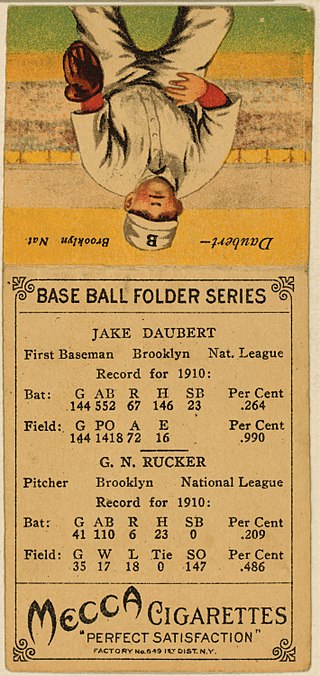
Baseball statistics include a variety of metrics used to evaluate player and team performance in the sport of baseball.

Sabermetrics is the original or blanket term for sports analytics, the empirical analysis of baseball, especially the development of advanced metrics based on baseball statistics that measure in-game activity. The term is derived from the movement's progenitors, members of the Society for American Baseball Research (SABR), founded in 1971, and was coined by Bill James, who is one of its pioneers and considered its most prominent advocate and public face.

Softball is a popular variation of baseball, the difference being that it is played with a larger ball, on a smaller field, and with only underhand pitches permitted. Softball is played competitively at club levels, the college level, and the professional level. The game was first created in 1887 in Chicago by George Hancock.
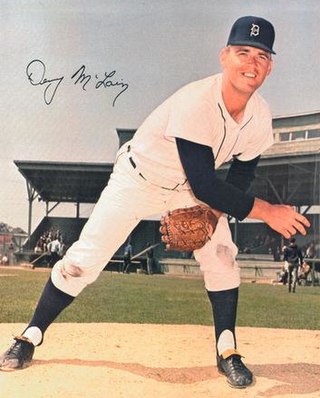
In baseball and softball, a win–loss record is a statistic that indicates the number of wins and losses credited to a pitcher. For example, a 20–10 win–loss record would represent 20 wins and 10 losses.

In baseball, the pitcher is the player who throws ("pitches") the baseball from the pitcher's mound toward the catcher to begin each play, with the goal of retiring a batter, who attempts to either make contact with the pitched ball or draw a walk. In the numbering system used to record defensive plays, the pitcher is assigned the number 1. The pitcher is often considered the most important player on the defensive side of the game, and as such is situated at the right end of the defensive spectrum. There are many different types of pitchers, such as the starting pitcher, relief pitcher, middle reliever, lefty specialist, setup man, and the closer.
In baseball, value over replacement player is a statistic popularized by Keith Woolner that demonstrates how much a hitter, pitcher or outfielder contributes to their team in comparison to a replacement-level player who is an average fielder at that position and a below average hitter. A replacement player performs at "replacement level," which is the level of performance an average team can expect when trying to replace a player at minimal cost, also known as "freely available talent."
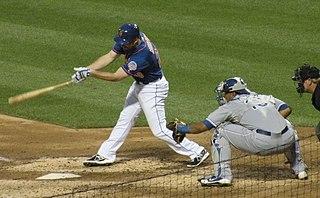
Catcher is a position in baseball and softball. When a batter takes their turn to hit, the catcher crouches behind home plate, in front of the (home) umpire, and receives the ball from the pitcher. In addition to this primary duty, the catcher is also called upon to master many other skills in order to field the position well. The role of the catcher is similar to that of the wicket-keeper in cricket.

In baseball and softball, a relief pitcher or reliever is a pitcher who pitches in the game after the starting pitcher or another relief pitcher has been removed from the game due to fatigue, injury, ineffectiveness, ejection, high pitch count, or for other strategic reasons, such as inclement weather delays or pinch hitter substitutions. Relief pitchers are further divided informally into various roles, such as closers, setup men, middle relief pitchers, left/right-handed specialists, and long relievers. Whereas starting pitchers usually throw so many pitches in a single game that they must rest several days before pitching in another, relief pitchers are expected to be more flexible and typically pitch in more games with a shorter time period between pitching appearances but with fewer innings pitched per appearance. A team's staff of relievers is normally referred to metonymically as a team's bullpen, which refers to the area where the relievers sit during games, and where they warm-up prior to entering the game.
A long reliever or long-relief pitcher is a relief pitcher in baseball who enters the game if the starting pitcher leaves the game early.
In baseball, the double switch is a type of player substitution, usually performed by a team while playing defense. The double switch is typically used to make a pitching substitution, while simultaneously placing the incoming pitcher in a more favorable spot in the batting order than was occupied by the outgoing pitcher. To perform a double switch, the ball must be dead.
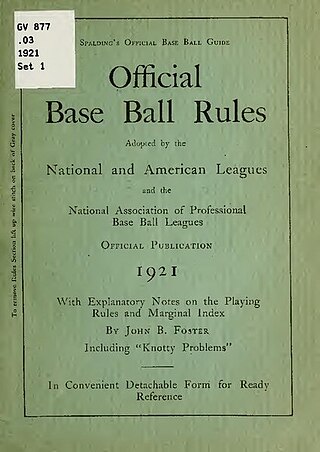
Throughout baseball's history, the rules have frequently changed as the game continues to evolve. A few typical rules most professional leagues have in common are that four balls are a base on balls, three strikes are a strikeout, and three outs end a half-inning.
A swingman is an athlete capable of playing multiple positions in their sport.
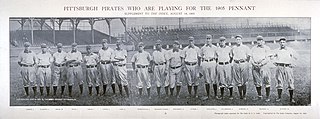
A Major League Baseball roster is a list of players who are allowed, by league agreement, to play for a Major League Baseball (MLB) team. Each MLB team maintains two rosters: an active roster of players eligible to participate in an MLB game, and an expanded roster encompassing the active roster plus additional reserve players.
A ball hog is a derisive term for a basketball player who handles the ball exclusively to the point of impairing the team. Despite not being a violation of the rules of basketball, "ball-hogging" is generally considered unacceptable playing behavior at all levels of basketball competition. The term is highly subjective, and any individual player might be considered a ball hog by some observers but not by others.
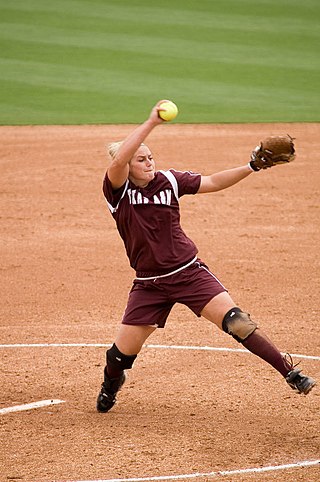
Fastpitch softball, or simply fastpitch, is a form of softball played by both women and men. While the teams are most often segregated by sex, coed fast-pitch leagues also exist. Considered the most competitive form of softball, fastpitch is the format played at the Olympic Games. Softball was on the International Olympic Committee (IOC) program in 1996, 2000, 2004, 2008, and 2020.
This is an alphabetical list of selected unofficial and specialized terms, phrases, and other jargon used in baseball, along with their definitions, including illustrative examples for many entries.
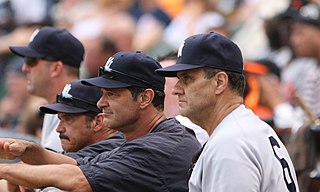
In baseball, a number of coaches assist in the smooth functioning of a team. They are assistants to the manager, who determines the starting lineup and batting order, decides how to substitute players during the game, and makes strategy decisions. Beyond the manager, more than a half dozen coaches may assist the manager in running the team. Essentially, baseball coaches are analogous to assistant coaches in other sports, as the baseball manager is to the head coach.

In baseball statistics, earned run average (ERA) is the average of earned runs allowed by a pitcher per nine innings pitched. It is determined by dividing the number of earned runs allowed by the number of innings pitched and multiplying by nine. Thus, a lower ERA is better. Runs resulting from passed balls, defensive errors, and runners placed on base at the start of extra innings are recorded as unearned runs and omitted from ERA calculations.












